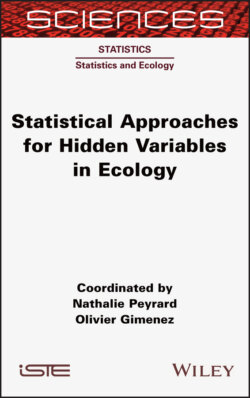Читать книгу Statistical Approaches for Hidden Variables in Ecology - Nathalie Peyrard - Страница 41
1.3.5.3. Inclusion of the nest distance covariate
ОглавлениеOur model may be developed further by adding a covariate, in this case the bird’s distance from the nest. We wish to determine whether changes in activity are correlated with distance from the nest. Using the formulation given in equation [1.9], we write:
where dt is the distance from the nest at time t. A quadratic component has been added to take account of the potentially variable character of the relation between the probability of transition and the covariate.
Figure 1.12 shows the evolution of the probability of state transitions as the distance from the nest changes. We see that, overall, there is a high level of persistence within states at any distance from the nest. Nevertheless, it appears that the closer the bird is to the nest (to the right on the x axis), the less likely it is to transition from activity 2 to activity 3. Note that the interest of the chosen covariate in this specific case is debatable; based on the AIC, a model without this covariate would be preferred.
Figure 1.12. Evolution of estimated transition probabilities as a function of distance from the nest. The figure should be read as a transition matrix. The graph in the second line, third column represents the evolution of the probability of a transition from state 2 to state 3 as a function of distance from the nest. As the distance variable has been centered and reduced, the origin represents the mean distance from the nest across all data points. For a color version of this figure, see www.iste.co.uk/peyrard/ecology.zip
